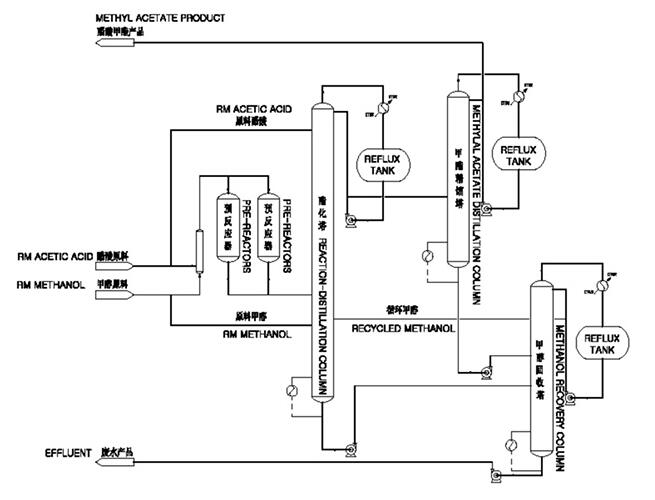Methyl acetate is a carboxylic acid ester with the molecular formula C 3 H 6 O 2. It is a clear, colorless liquid with a typical ester odor similar to that of glues and nail polish remover. It is very flammable, with a flash point of -10°C and a flammability rating of 3. Methyl acetate is commonly used in low-toxicity solvents such as glues and nail polish remover.
It is highly miscible with all common organic solvents (alcohols, ketones, diols, esters), but has little miscibility in water, but is more soluble at elevated temperatures. It is commonly found in fruits such as apples, grapes and bananas.

How is methyl acetate produced?
There are several methods of producing methyl acetate. One method used industrially is carbonylation. These types of reactions bring together carbon monoxide substrates. To produce methyl acetate, methanol is heated with acetic acid in the presence of sulfuric acid. Another method of production is the esterification of methanol and acetic acid in the presence of a strong acid. Sulfuric acid is a common catalyst used in this reaction.
Hazards and Toxicity
Methyl acetate has an NFPA health rating of 2 and can cause temporary incapacitation or residual injury. If inhaled or ingested, headache, dizziness, drowsiness and fatigue may occur. Contact with the eyes can cause irritation. It has a flammability rating of 3 and can ignite under most ambient temperature conditions because of its low flash point of -10 °C. When on fire, methyl acetate emits strong, irritating and toxic fumes that can travel great distances. These vapors are also explosive and a risk of bursting if they can be returned to the source of the fire.
The reactivity of methyl acetate is consistent with that of other compounds in the ester group. In the presence of strong bases or strong acids (such as sodium hydroxide or hydrochloric and sulfuric acids), it will convert back to methanol and acetic acid at high temperatures.
Safety procedures
Always wear personal protective equipment when handling methyl acetate to prevent contact with skin, eyes, nose and throat. In case of skin contact, wash the contaminated area immediately and seek medical attention. In case of contact with eyes, flush immediately with plenty of water. If swallowed, seek immediate medical attention.
When opening containers or moving opened containers, they must be completely resealed and kept in an upright position to prevent leakage.
If methyl acetate is spilled, isolate the spill for at least 50 meters in all directions. In the event of a fire, water extinguishers may be ineffective due to the low flash point of methyl acetate. Alcohol-resistant foam extinguishers are suitable for small and large fires.
Storage and Distribution
Methyl acetate should be stored in a storage area dedicated to flammable liquids and sealed in drum containers. The area should be cool, dry, well ventilated, out of direct sunlight, heat sources, open flames, and away from strong acids and bases, nitrates and strong oxidizers.
Bulk solvent exporters typically distribute by bulk ship or tanker truck. For transportation purposes, methyl acetate is classified as a flammable liquid with a fire hazard rating of 2 and a packing group of 2.
What are the uses of methyl acetate?
Methyl acetate is used commercially as a flavoring agent in food additives for rum, brandy, whiskey, adhesives, cleaning products, personal care and cosmetics, lubricants, fast drying paints (e.g. varnishes), automotive coatings, furniture coatings, industrial paint coatings (low boiling point) inks, resins, oils, artificial leather, and electronics. The main user end markets for this product are the paint, coating, cosmetic, textile and automotive industries.














